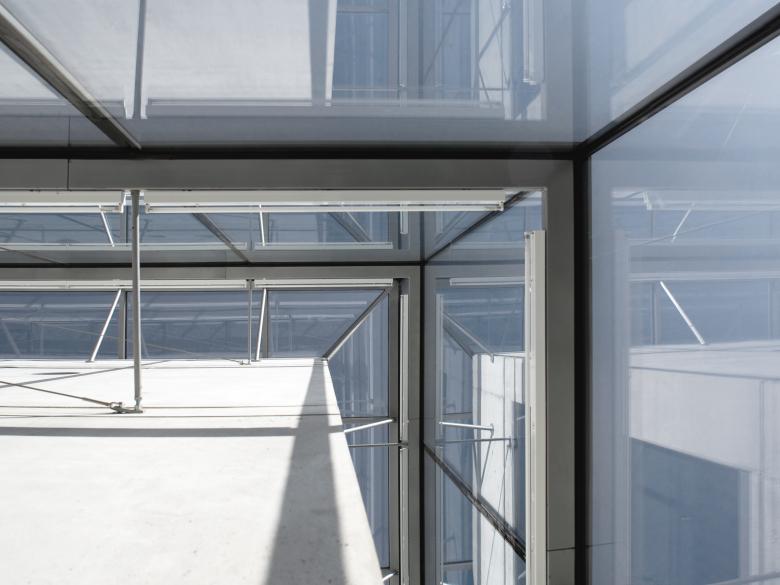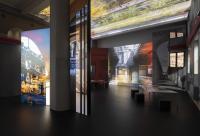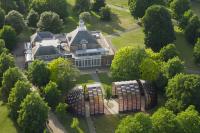Glass Competence Center Glas Trösch
Kempten, Germany
Building with glass: The delightful play with light
Author: Bruno Lukas, Press'n'Relations GmbH, Ulm, Germany
Glass can transmit and reflect light, appear cold and warm, set accents or fade into the background - the traditional and at the same time modern material is in demand in architecture as never before. With its newly opened Interior Competence Center in Kempten, Glas Trösch impressively illustrates the contribution glass can make in interior design, but also in exterior design. In unique showrooms with selected glass exhibits, Trösch invites visitors on a journey of discovery. Strictly speaking, this journey begins even before you enter the center. The elongated, two-story new building designed by the Kempten-based architectural firm becker architekten under the direction of Michael Becker is in itself an exclusive and unique glass exhibit: With a suspended all-glass façade, walkable glass surfaces and glass doors, balustrades and partitions, Glas Trösch's new building demonstrates the wealth of possibilities that can be realized architecturally with this material today. The main materials, glass and concrete, enter into a close symbiosis. They illustrate to the visitor the duality of glass in all its gradations, always contrasting with each other in different material characteristics: soft and hard, light and dark, transparent and opaque, light and heavy. Here the glass doors, which emphasize the openness and transparency of the offices, there the solid and heavy concrete doors of the staircases, which stand for stability and reliability. At the same time, the glass surfaces absorb the play of light, creating a wide variety of moods depending on the time of day and the weather, thus giving the building a lively architecture. While the glass skin is in the foreground when viewed from the outside during the day, it almost disappears when illuminated at night, revealing the stylishly furnished showrooms and the building's inner solid core.
The contrast and ambivalence are emphasized not only by the concrete and glass materials, but significantly by the unique construction, which is based on geometrically simple rectangular shapes. The construction method further accentuates the visual interplay: the building is based on a solid concrete core foundation and a bridge structure, which is enveloped by a four-sided insulating glass curtain and a glass ceiling. In the reinforced concrete bridge structure, which is freely spanned over a length of 36 meters, the upper floor rests as a floor-to-ceiling box girder on two lateral abutments. This creates a column-free and flexible large space for the glass exhibition on the first floor. The maximum openness on the long side is contrasted by an introverted office wing on the upper floor. Two green courtyards illuminated from above structure the office spaces and extend down to the first floor, creating exciting spatial interconnections and ensuring differentiated daylighting.
Overall, the deliberate contrast of transparent glass surfaces and solid concrete vessels creates a serene building atmosphere. Only soft sound-insulating felt slats on the raw concrete ceilings and specially tailored built-in furniture made of black-colored MDF represent an addition to the sparse material canon. This is also conveyed to the outside via the outdoor facilities - the building, placed in the middle of a gravel surface, is lined with deciduous trees facing the street.
One of the architectural highlights of the building is the insulating glass façade suspended from metal gallows, which can slide vertically and transfer the loads occurring on the flat roof - for example snow loads - by means of a lowering movement. The metal gallows themselves are supported on the rectangular concrete body that is enveloped by the façade. The 80 square meters of walkable area made of safety glass along the facade are also an eye-catcher - they impressively prove that glass is not as fragile as is often assumed. Underneath the walkable glass is a layer of natural pebbles, which means that the interior spaces on the first floor are completely "in the gravel". The construction conveys a unique spatial impression that blurs the boundaries between interior and exterior. Here, the architecture once again illustrates to the visitor the duality and ambivalence of glass - the recurring motif of this extraordinary, walk-in "exhibit".
- Architects
- Becker Architects Planners BDA
- Location
- Kempten, Germany
- Year
- 2008
- Team
- Michael Becker, Franz Schröck, Bernhard Kast
- Structural engineering
- Böller Bischof PartGmbB
- Building services engineering
- IB Stöffel
- GFA
- 757 m2
- GA
- 3.223
- Awards
- PBB Deutscher Gewerbebaupreis 2011, Baupreis Allgäu 2009 (recognition)











